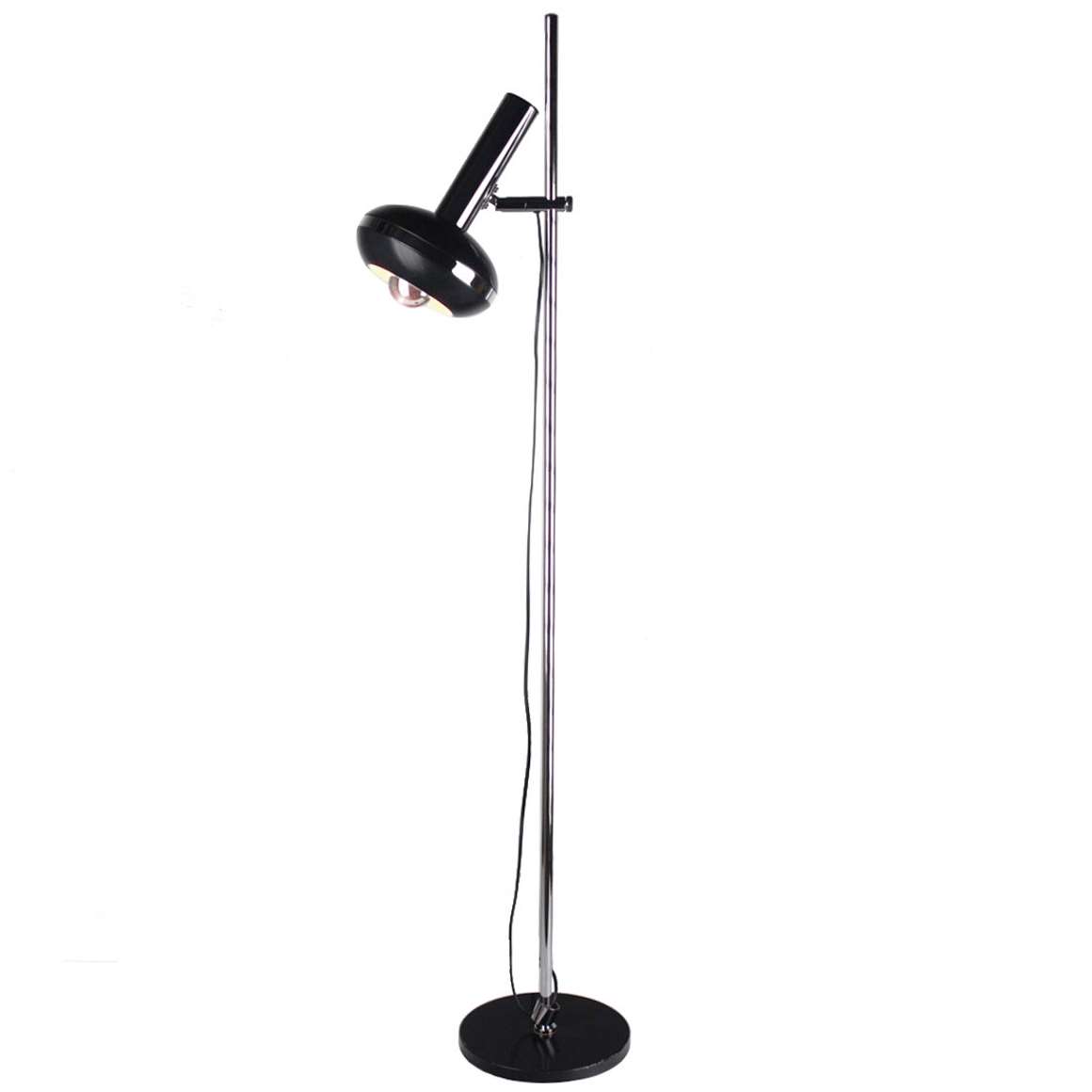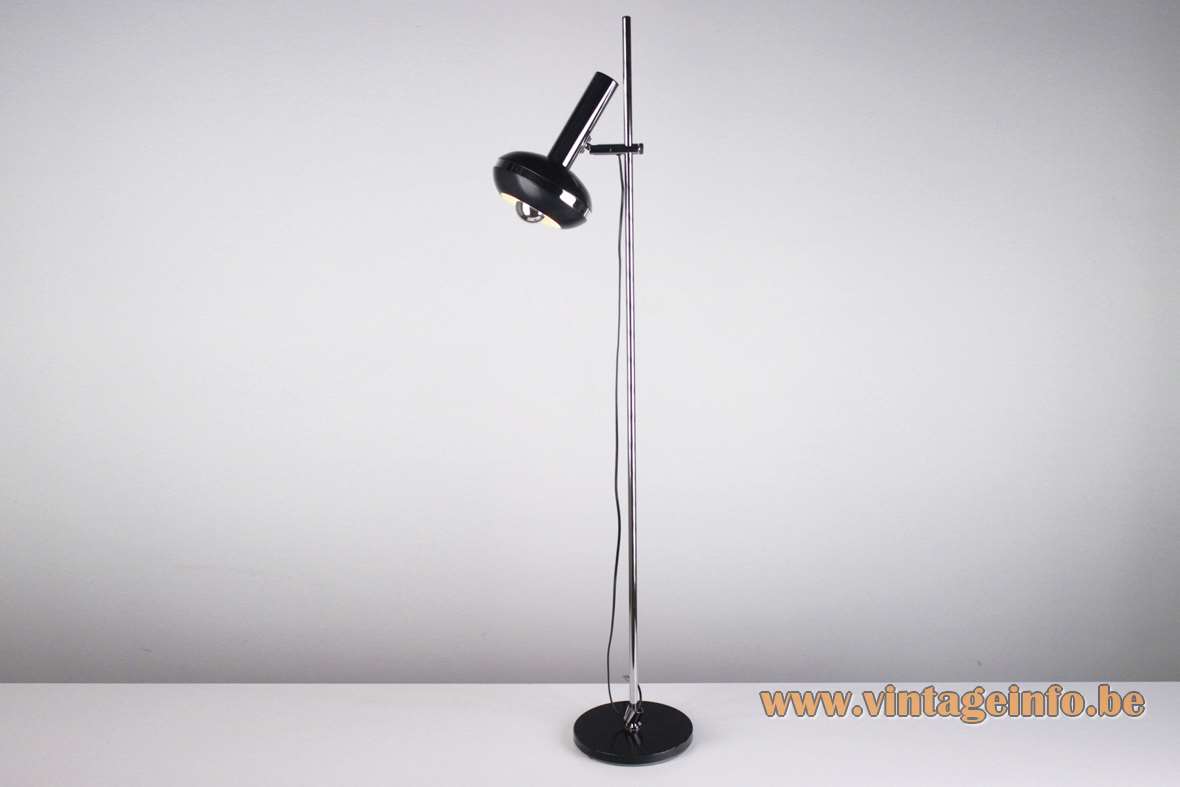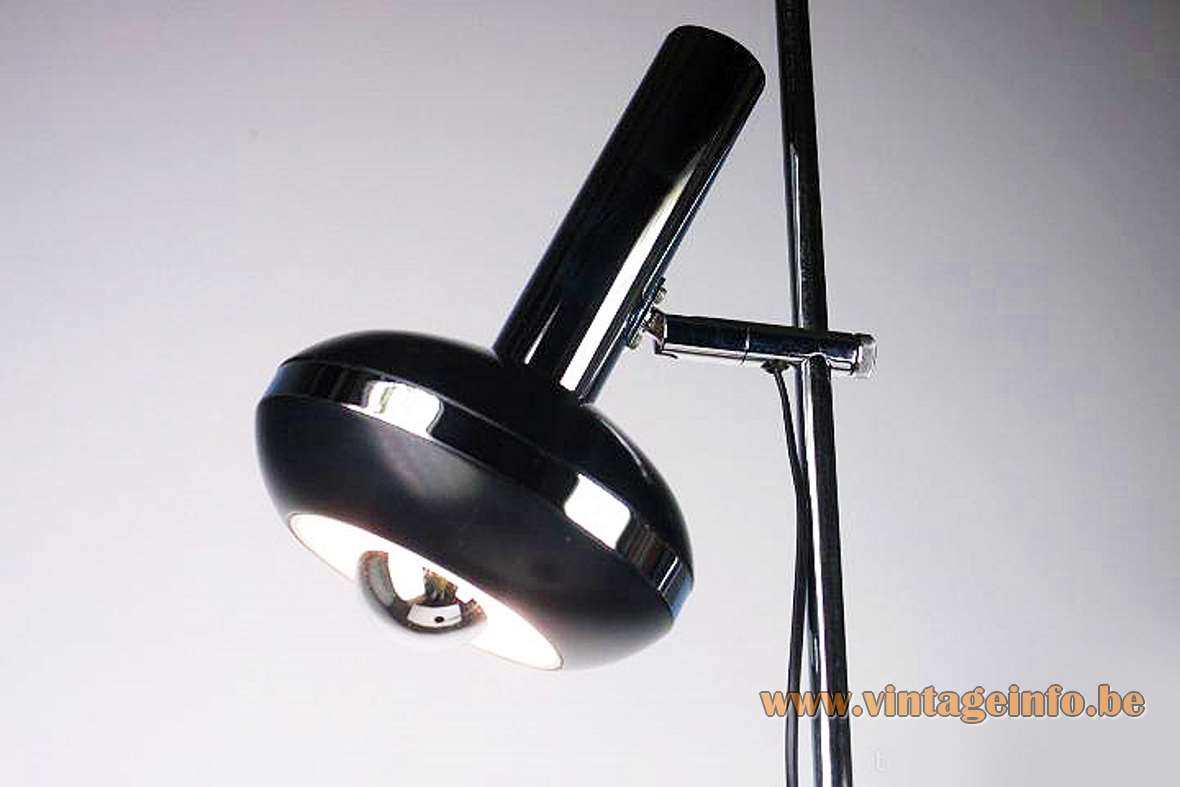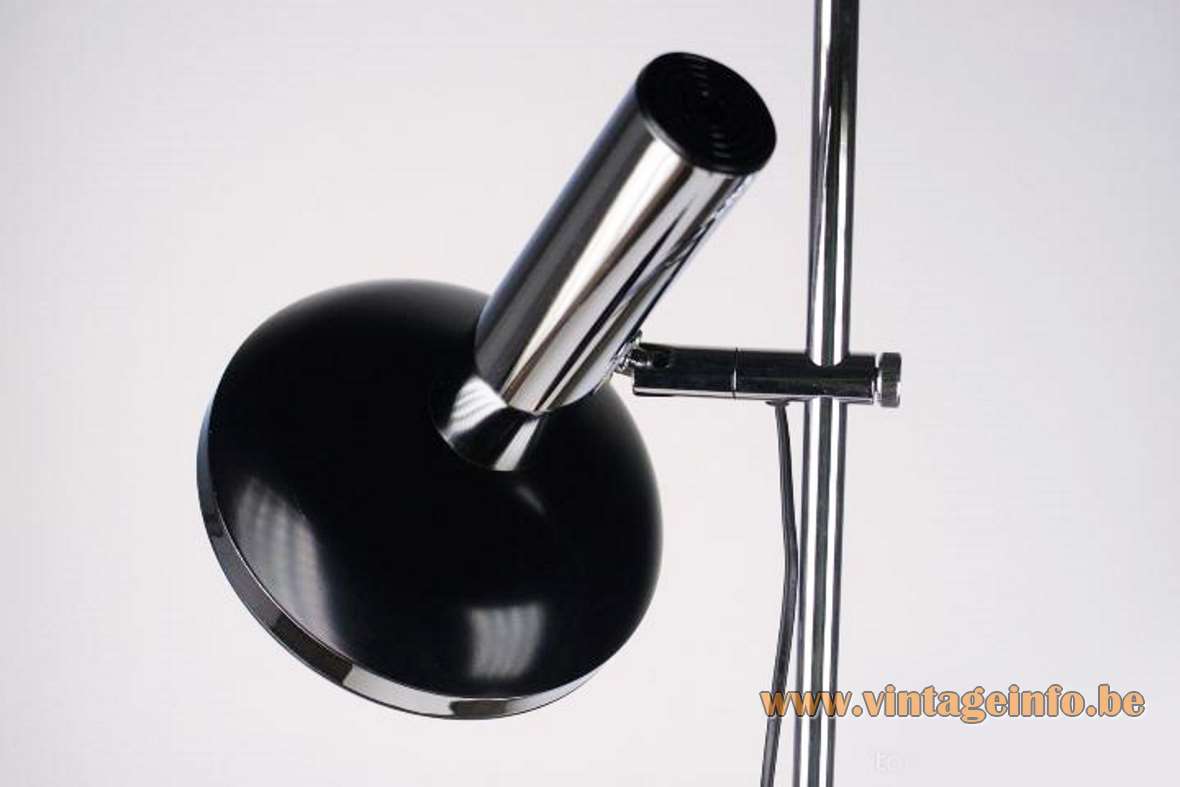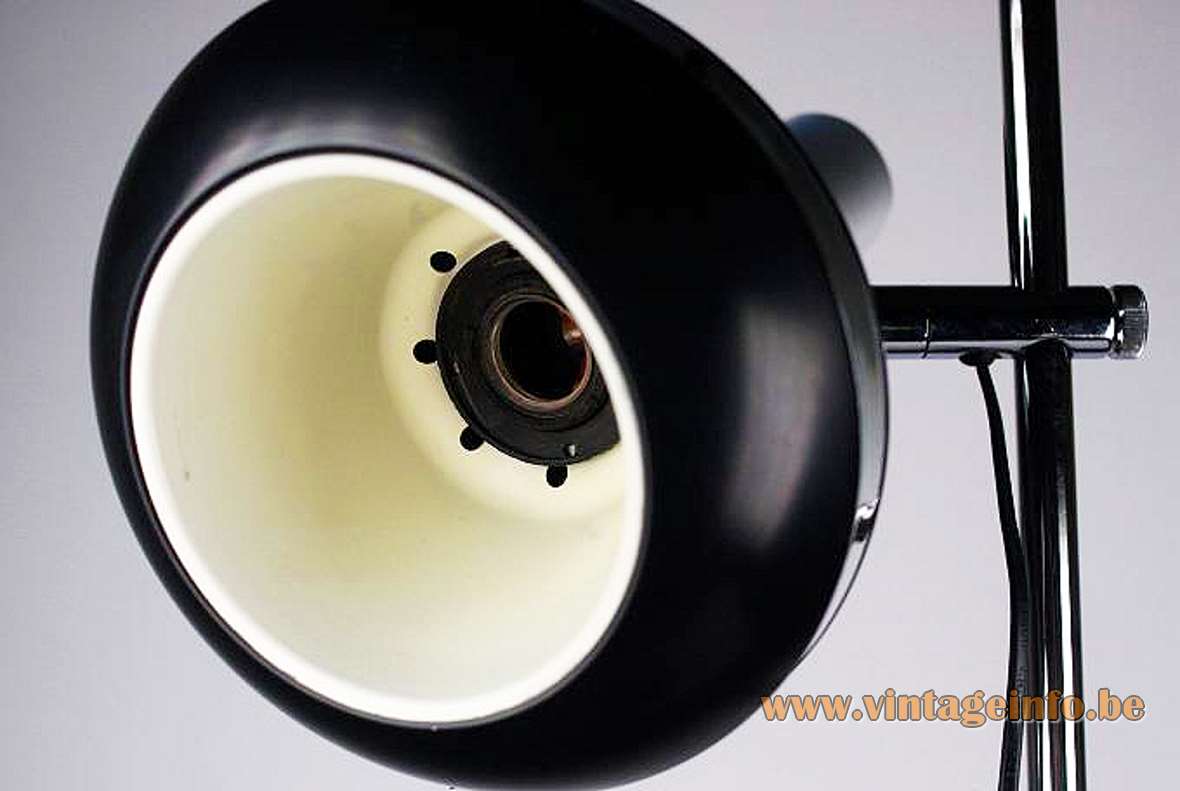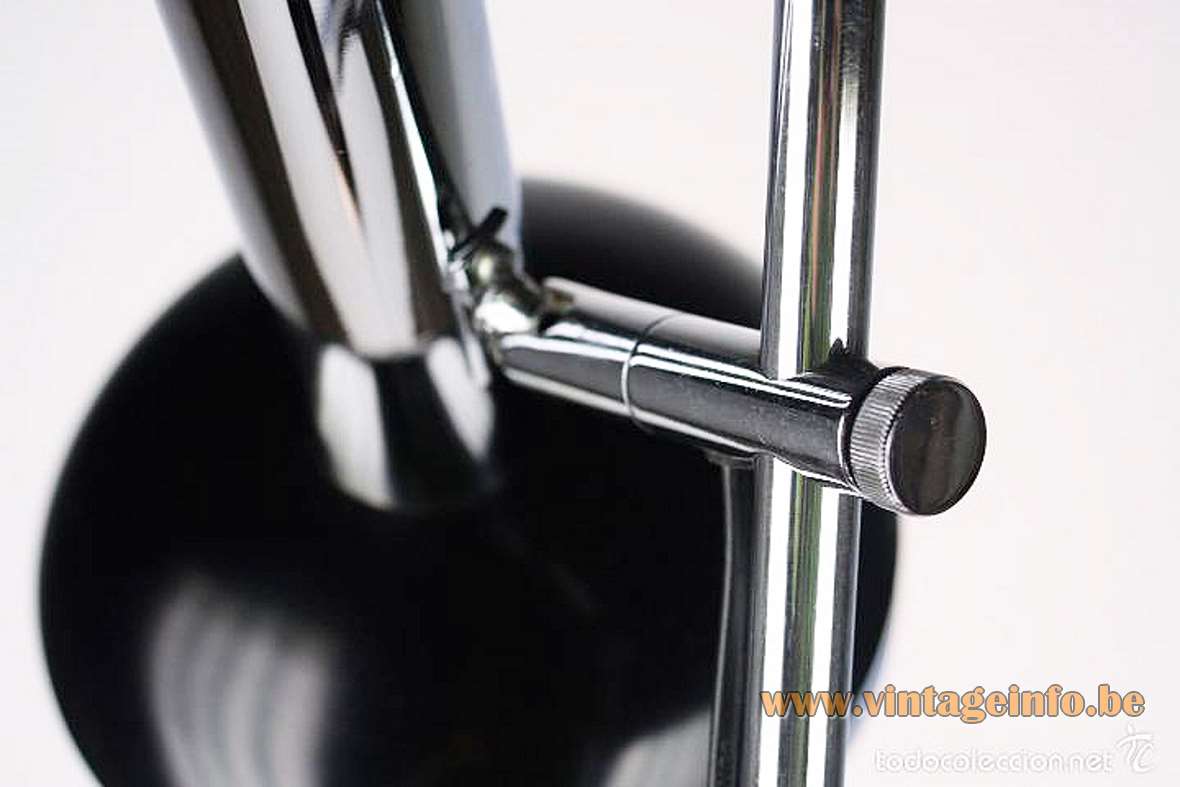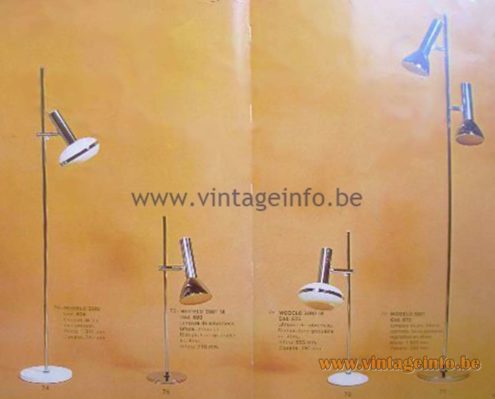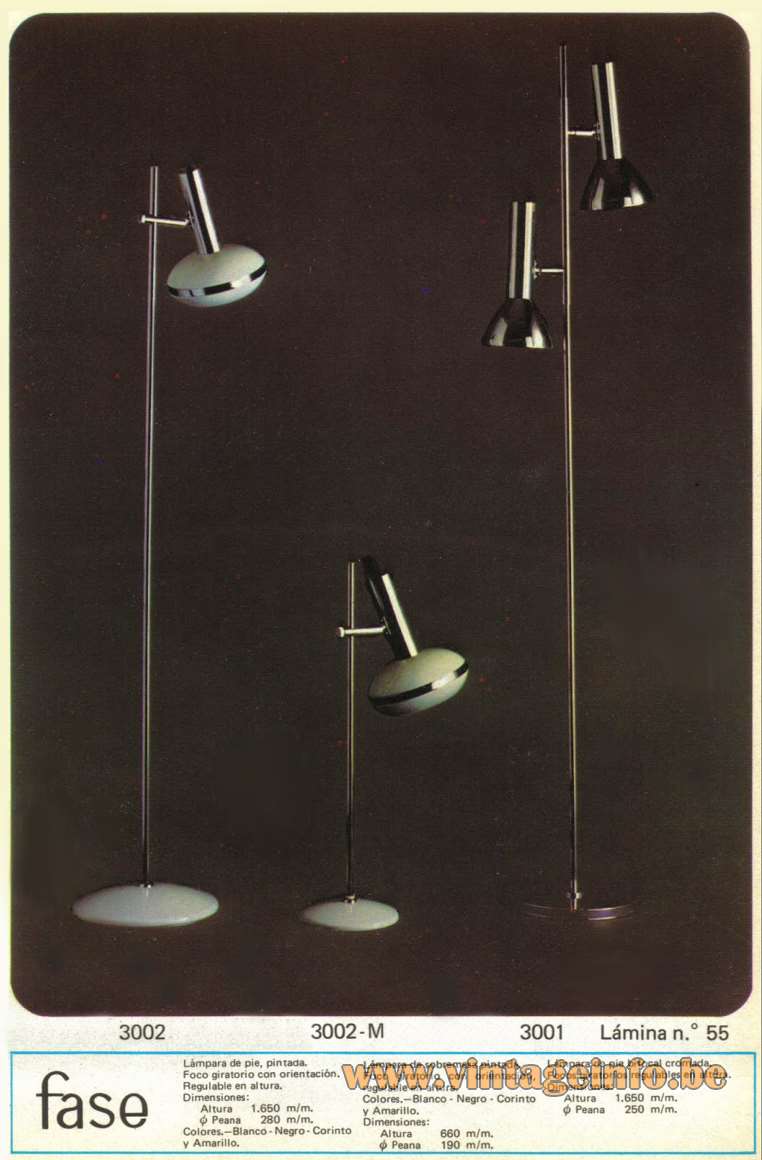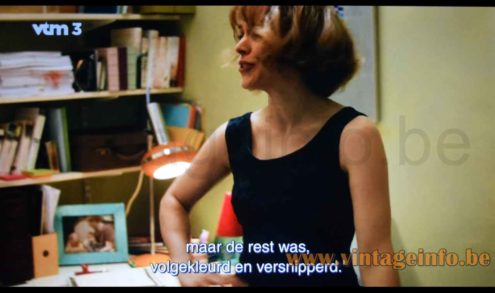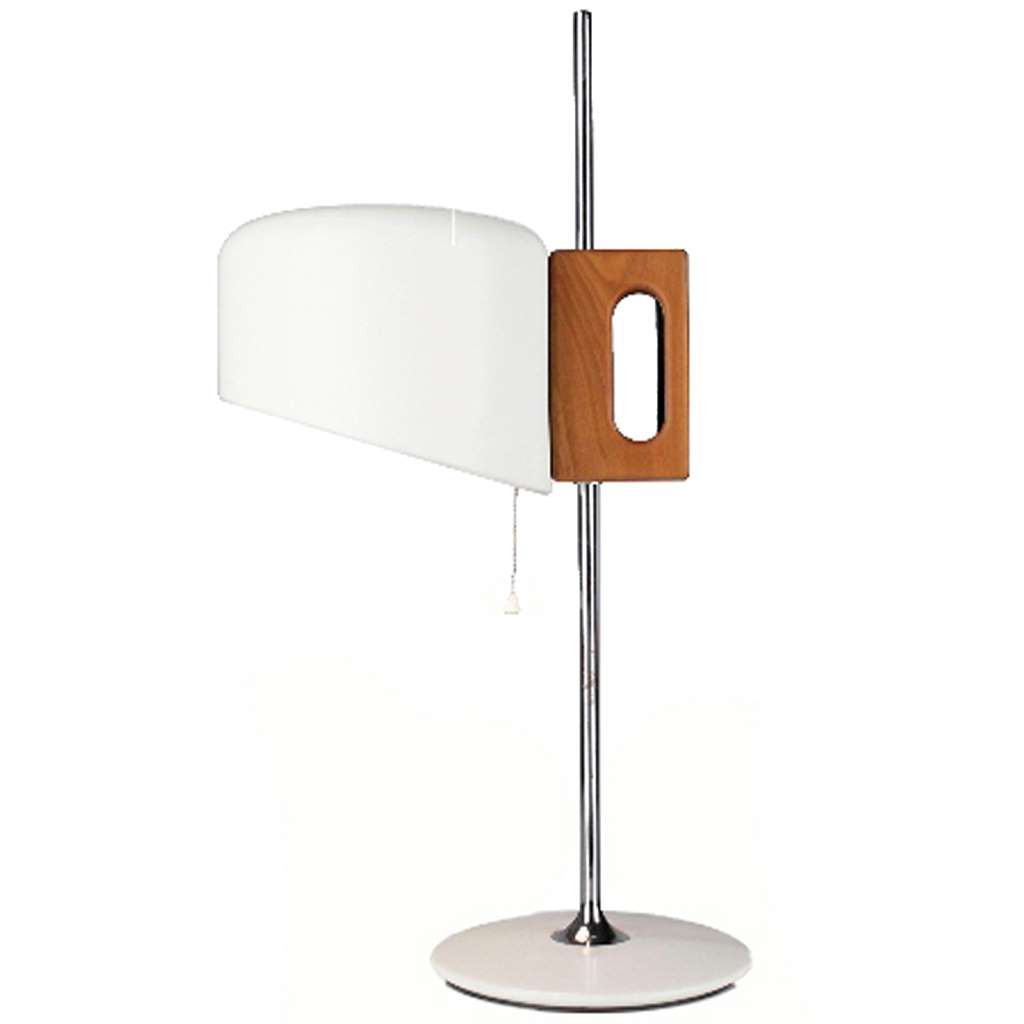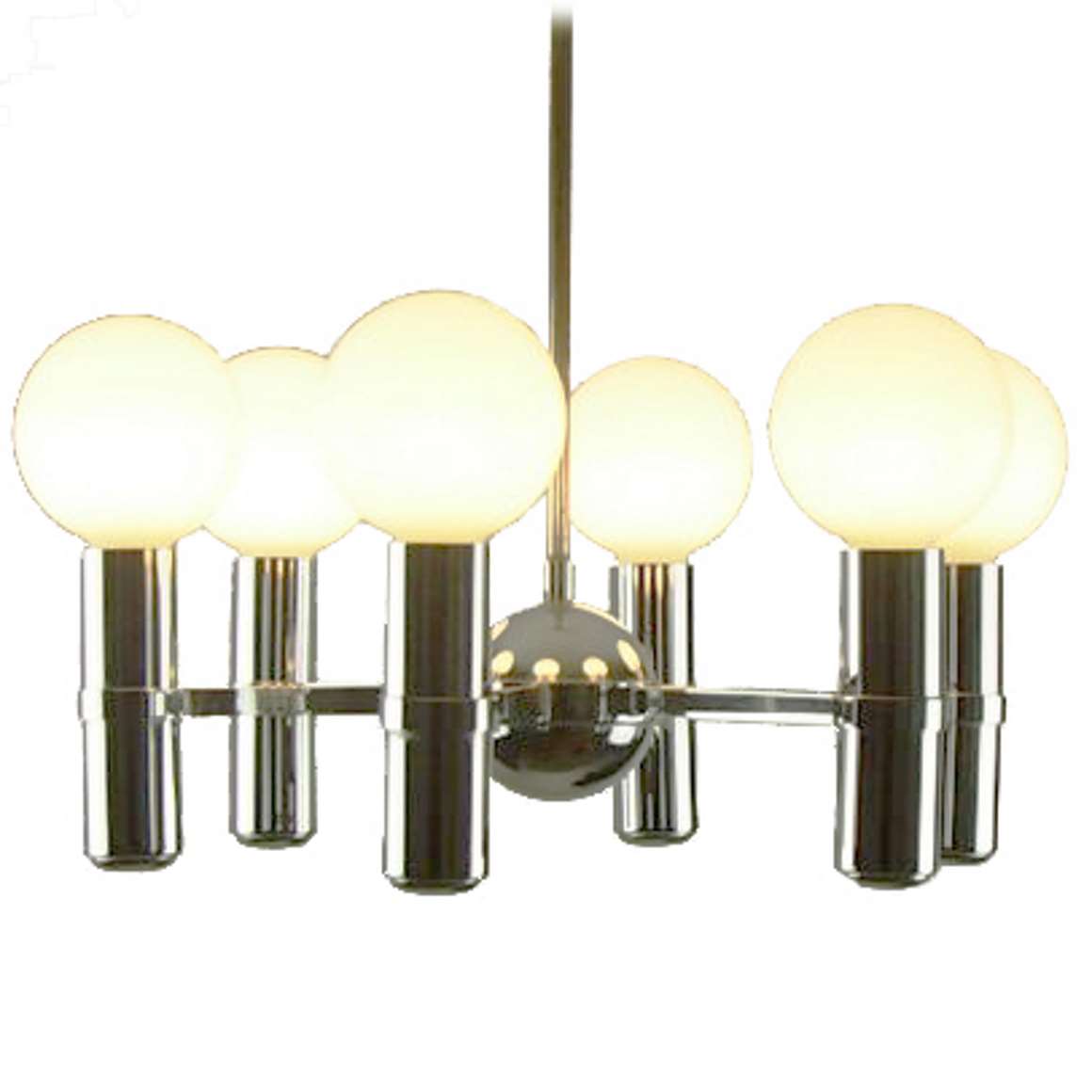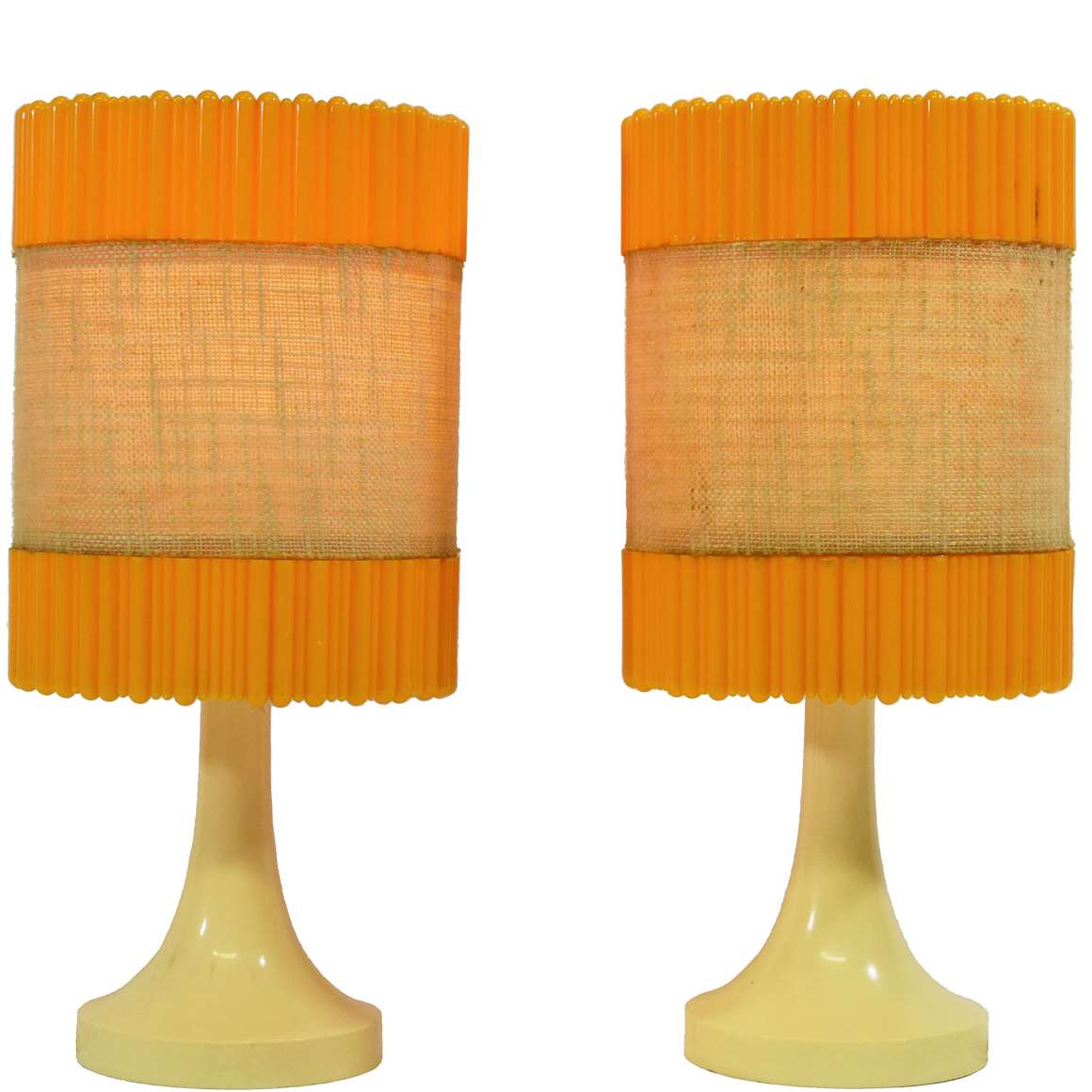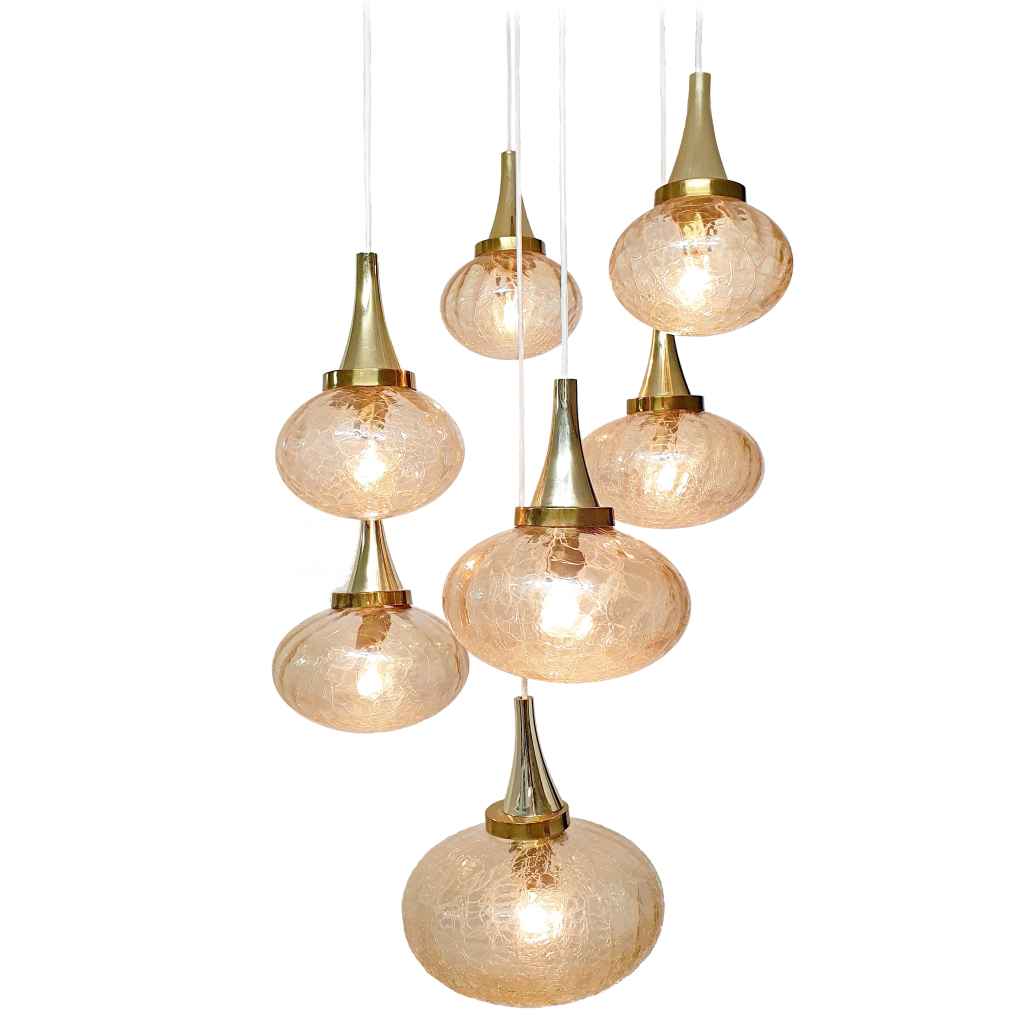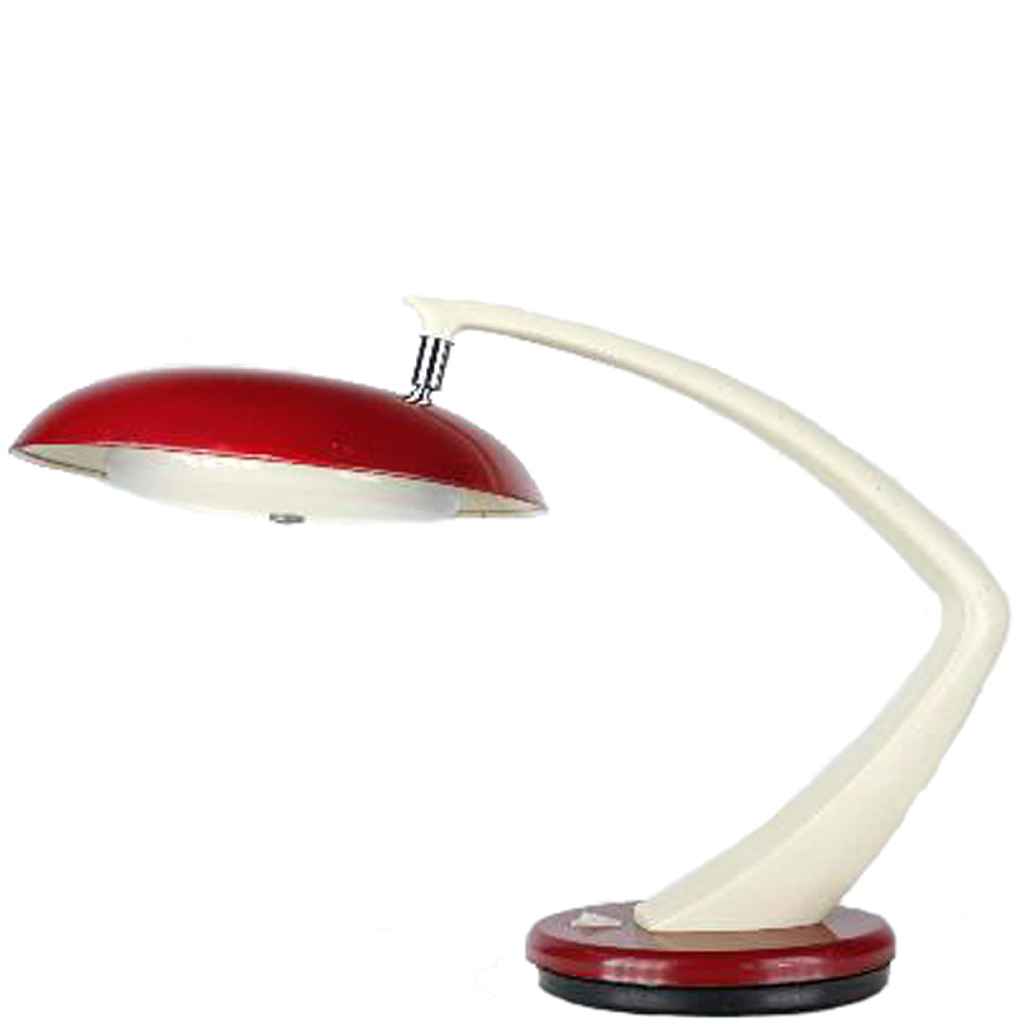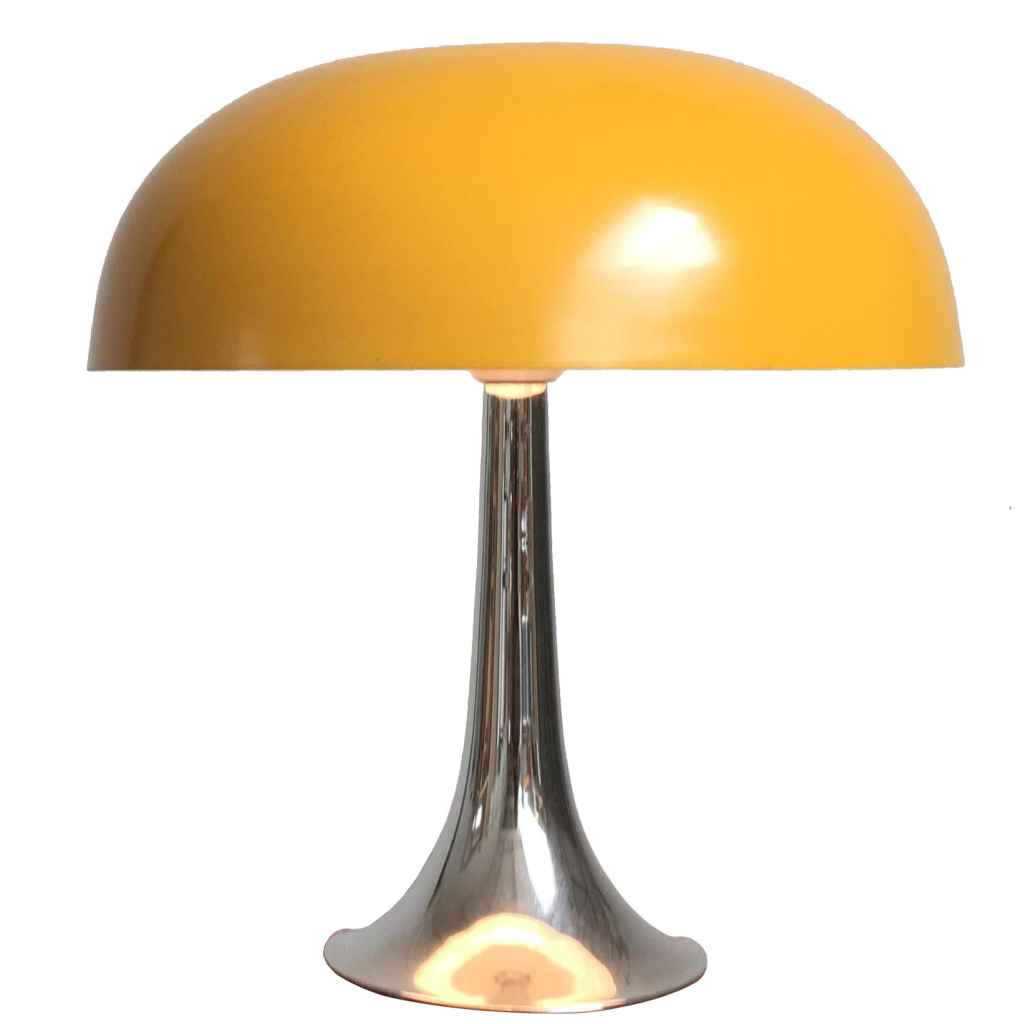Fase Black & Chrome Floor Lamp – Catalogue Picture
Fase Black & Chrome Floor Lamp – Catalogue Picture
Lamps In The Movies
An orange Fase table lamp was used as a set decoration in the 2013British science fantasy comedy-drama film About Time. Starring Domhnall Gleeson, Rachel McAdams and Bill Nighy.
Many thanks to Lluís from Eclectique Vintage for the photos.
Fase Black With Chrome Floor Lamp
Materials: Round black painted flat base. Cast iron counterweight inside the base. Chromed metal rod and arm (iron). Adjustable black painted round aluminium lampshade with a chrome ring & chrome tube. Bakelite E27 socket.
Height: 140 cm / 55.11”
Lampshade: ∅ 17 cm / 6.69”
Base: ∅ 24 cm / 9.44”
Electricity: 1 bulb E27, 1 x 60 watt maximum, 110/220 volt.
Any type of light bulb can be used, not a specific one preferred.
Period: 1970s – Mid-Century Modern.
Designer: To be appraised.
Manufacturer: Walter Hustadt GmbH & Co. KG Leuchten, Am Schindellehm 7-9, 59755 Arnsberg, Germany.
Other versions: The Fase black with chrome floor lamp exists as a double light floor lamp, table lamp and wall lamp. Produced in several colours.
These series of lamps were also sold by Fase from Spain. On this page pictures from the 1974 and 1974-1975 catalogue. Fase sold many lamps made by other companies. More information over here. This black with chrome floor lamp is a Fase lamp.
Similar lamps were also sold by the German company Aro Leuchte.
The other lamps in the catalogue pictures, the two chrome lamps, and the chrome with black floor lamp, were also sold by both companies. Probably also by others. These lamps are often presented as lamps designed by Koch & Lowy, but that’s a hoax.
Koch & Lowy
When you do a search on the internet for the OMI mark you find on the chromed knee joint, you always see lamps that are described as lights designed by Koch & Lowy for OMI. Koch & Lowy is not a design team, but an American light company and has got nothing to do with this lamp. Today Koch & Lowy is owned by Chapman Manufacturing Company, Inc. from Avon, Massachusetts. Koch & Lowy used OMI joints for some lamps they produced and stamped their name next to the OMI logo, hence the confusion.
Some say OMI Switzerland, but there is nothing to be found about a Swiss company with that name. Others say OMI DBGM, because sometimes it is written on the knee joint.
DBGM is not some type of company, but it is German for utility model, “gebrauchsmuster ” in German. Only used in Germany and Austria: D eutsches B undes-G ebrauchsm uster. To say it simple, the knee joint is made by a company named OMI and the system is licensed for some period, most of the time 10 years: the small brother of a patent.
Fase
The Fase company was founded by self-made man Pedro García Martin and designer Luis Pérez de la Oliva.
The Boomerang 64 lamp was one of their first designs in 1964, you find it over here on Vintageinfo. Initially they sold their self-produced lamps to the markets in and around the capital Madrid before successfully opening a factory in Torrejón de Ardoz on the outskirts of the city.
They produced mainly lamps, but also ashtrays and other products such as office bins and coat racks.
Fase supplied many lamps to the offices of General Franco ‘s dictatorial government and the Guardia Civil, some sort of military police. From 1975 on, after the death of Franco and the end of the regime, Fase started with Italian Modern and Bauhaus -inspired designs. The Spaniards were unfamiliar with this design because of the Franco regime that ruled the country with an iron fist and allowed few foreign influences.
During the 70s Fase exported lamps to Belgium, The Netherlands, Luxembourg, Great Britain, Norway, France, Italy, Germany, Portugal, United Arab Emirates, Japan, Hong Kong, Morocco, the United States and Canada. In total in more than 32 countries.
The 1980s
In the 1980s Fase jumped on the bandwagon of the halogen lighting. The break with tradition proved unsuccessful and ultimately contributed to the end of the business. A large fine of the Treasury in the early nineties for tax irregularities was the end for Fase. The company was officially dissolved in 1996.
Drowned, the company sold its manufacturing license to a German brand, Ma-Of, which slightly modified the original design by adding more chrome. Before these final death rattles, the partners had already separated. GEI (Gabinete Estudios Industriales – Cabinet Industrial Studies) was another company that sold similar lamps. Also Massive from Belgium produced a few lamps in this style.
When the company stopped producing them abruptly, there was a lot of ‘stock’ available in the warehouses. That’s why you find relatively many lamps with a label attached. Many lamps are sold new and never used in the box (NOS – New Old Stock).
Designers who have worked for the company include : Gabriel Teixidó. He designed the Iberia and Meca series and Tomás Díaz Magro, responsible for the Apolo, Minifase and Impala lamps. The most productive was Luis Pérez de la Oliva, who designed the majority of the Fase lamps.
Fase also sold lamps made by others such as the Yamada Shomei ‘Manon ’ table lamp from Japan. You can find it over here on Vintageinfo. The Prisma table lamp was produced in Italy by F.A.A.I. Arredo. Also the Sinus stacking ashtray made by Helit from Germany. A design by Walter Zeischegg from 1967. You can find it here in the MoMA, New York. Fase also sold lamps from other companies.
Hustadt-Leuchten
Hustadt-Leuchten was founded in September 1962 as Walter Hustadt GmbH & Co. KG Leuchten. Not much is know about it. The company officially ended business in may 2014. It went bankrupt some 5 years before.
Hustadt-Leuchten always produced high quality lights. You can find a few lamps on this website. The company received several design awards. One of the most well known designers for Hustadt-Leuchten was Klaus Hempel, who also designed lamps for the famous Gebr. Kaiser & Co. Leuchten, company, also from Germany.
OMI
The OMI company is Otto Meinzer GmbH & CoMetallwarenfabrik from Iserlohn in Germany (O tto M einzer I serlohn). It is a manufacturer of chromed brass joints for the lighting industry. The joints are marked with the OMI mark. The company was founded more than 50 years ago. They never produced lighting.
The switch of this lamp has stamps that say that the switch is approved for use in Denmark, Sweden, Norway and Germany.
Companies that use OMI parts are among others: Atelje Lyktan Sweden, Massive Belgium, Fase Spain, Hustadt Leuchten, Solken-Leuchten Germany, Abo Randers Denmark and many more.
Links (external links open in a new window)
OMI – Otto Meinzer GmbH & Co website
Gebrauchmuster – Wikipedia (in German)
About Time (2013) film – Wikipedia
Vintageinfo
Massive Belgium Fase style lamp
Hustadt-Leuchten wall lamp with a red lampshade
